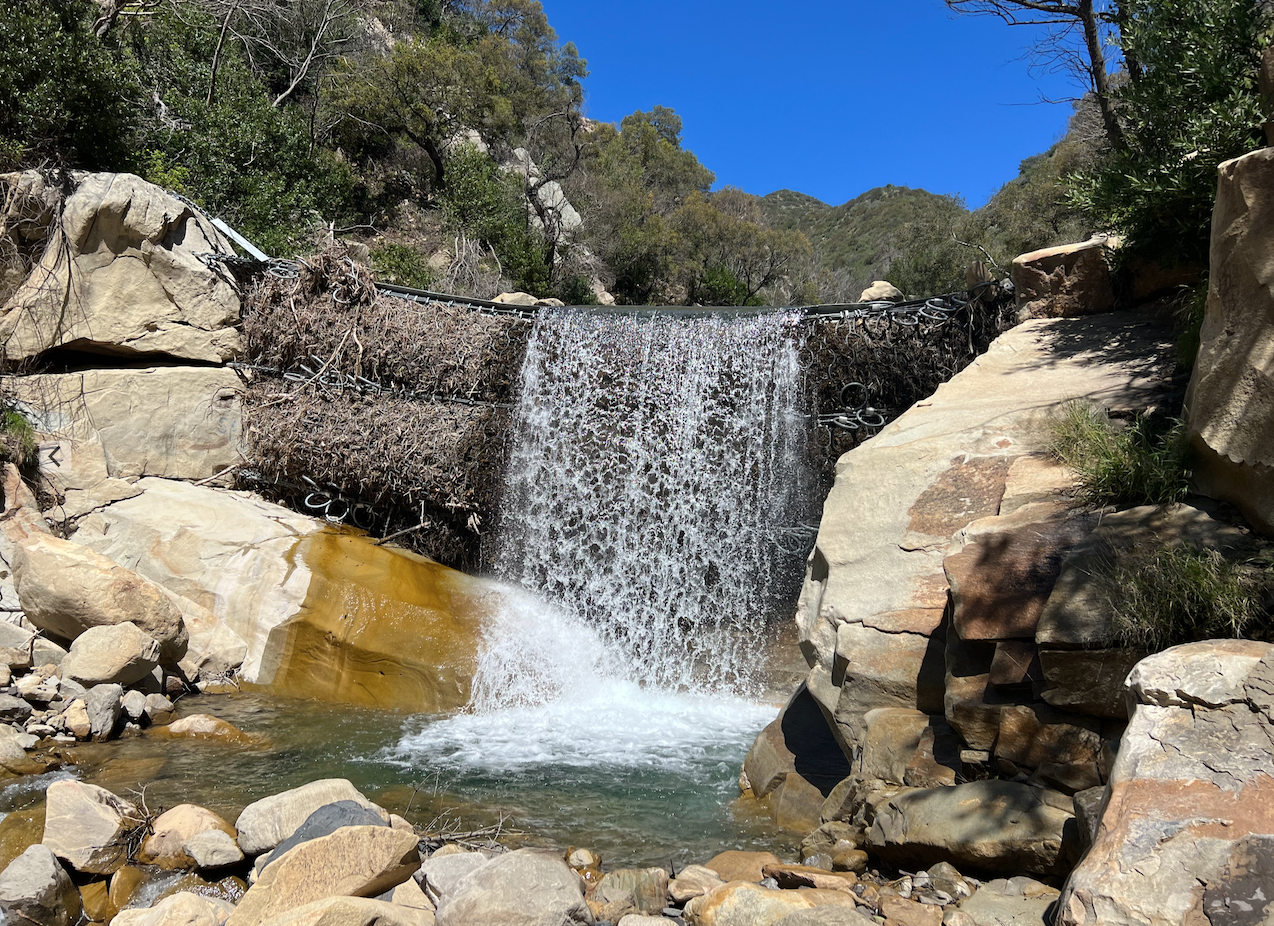Who could have predicted that 2023 would be one of the wettest years in recorded history? What a welcome and wondrous experience it has been to observe our local creeks spilling over once again with waterfalls and renewed, life-giving stream flows.
So much rain at once also comes with its downsides. It will take some time for local agencies to repair important roads and popular trails. Of course, anyone who was around or lived through the tragic debris flows of 2018 recalls how things were so much worse just a few years ago. It was with that tragedy in mind that local residents admirably banded together to implement the Montecito Emergency Debris Flow Mitigation Project, six steel ring nets stretched across Montecito creeks to add incremental additional protection for downstream homeowners until the fire-scarred slopes had revegetated.
The project was broadly supported, but did also face skepticism from many at its outset. From the ground, the nets resemble something out of a Jurassic Park movie in scale, but the actual capacity of the nets is absolutely dwarfed in relative comparison to the volume of material that gets transported during a large storm event, and even the project’s proponents have acknowledged the nets wouldn’t have withstood or prevented the devastating flows of 2018.
Though designed to be environmentally benign enough at face value, they had one potentially fatal flaw — how do you maintain them once they fill up with debris? Santa Barbara County already struggles to manage its debris basins — now endlessly mired in a controversial cycle of excavation, trucking, and dumping to get trapped sediment to the beach. But for the ring nets, without access by road, the only option would be to use helicopters to lift in heavy equipment by air for a remote excavation and “restoration” of the creek post flow. The plan always seemed a bit half-baked, but we were a community responding from crisis, perhaps willing and eager to do whatever it took to add a sense of additional protection from debris flows, and the nets were ultimately installed as a grand experiment.
So it is that we now find ourselves in our current situation.
The net on upper San Ysidro Creek filled up with debris in January, after the first major storm of this season. From all appearances, the net filled, not with the SUV-sized boulders the community was concerned about, but with smaller vegetation that backed up against the net and then trapped thousands of cubic yards of mostly cobble, gravel, and sand that would have otherwise been transported out to our beaches.
Environmentally, the current conditions are appalling. What is essentially a 25-foot dam now entirely blocks the creek, fragmenting sensitive wildlife habitat and posing a serious public safety hazard. Anyone remotely concerned over our role as stewards of our local creek ecosystems should be paying attention to this project.
Conditions imposed by the county for project approval include a requirement that the nets be cleared of debris “preferably within 48 hours but no later than 72 hours after [the net is inspected].” However stream flows must be low enough for repairs to occur safely, and are likely contributing to a delayed cleanup. In any event, we’ll soon be headed into May, and the creek remains fully blocked. It’s difficult to imagine how the material will be excavated and relocated in such a remote location without further impacting the ecosystem.
To be frank, it’s quite a mess, and this was just one net.
This is not about throwing stones, however. Our community experienced tragedy and trauma. The project proponents had the best intentions in mind and took pains to address environmental concerns at the outset. But it’s time to re-examine the long-term future of the nets. They simply aren’t feasible to maintain in any sort of timeframe that is responsive to the significant environmental impact they cause when they fill up. It’s unclear what real amount of risk the nets mitigate for downstream neighborhoods. Further, the mountains are now largely revegetated, and the risk of future catastrophic debris flows is very significantly reduced.
Under current restrictions, the nets are already slated to be removed by the end of 2023, unless the permits are extended. Perhaps it’s a good time to re-evaluate. We’ve learned some good lessons. Let’s declare victory and call it a mission accomplished. It’s time to restore our creeks and to take down the ring nets.
Benjamin Pitterle is an environmental scientist with over 18 years of experience advocating for the health of South Coast watersheds and coastal ecosystems. He currently serves as Director of Advocacy and Field Operations for Los Padres ForestWatch.




